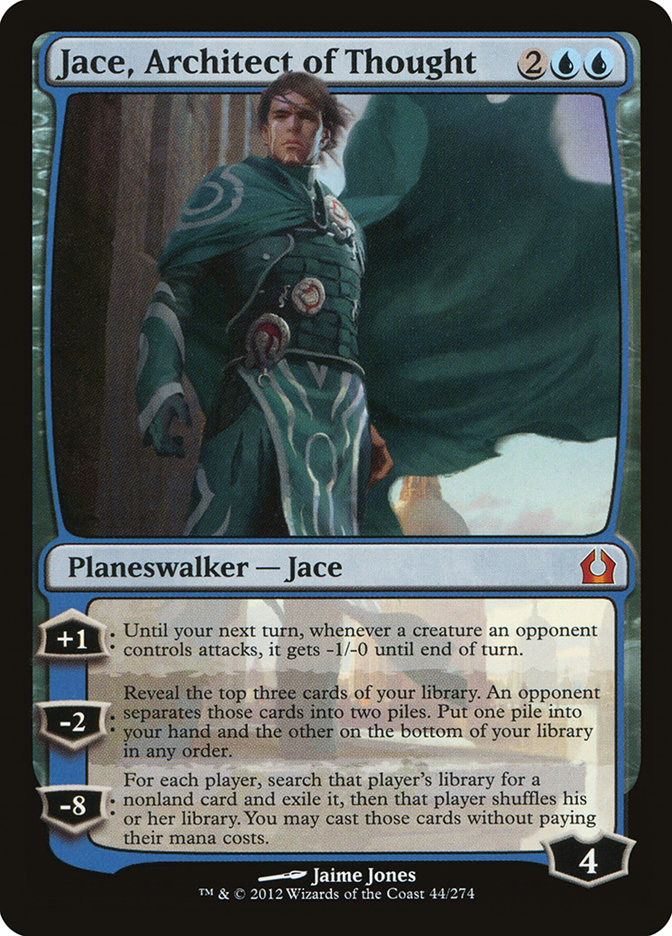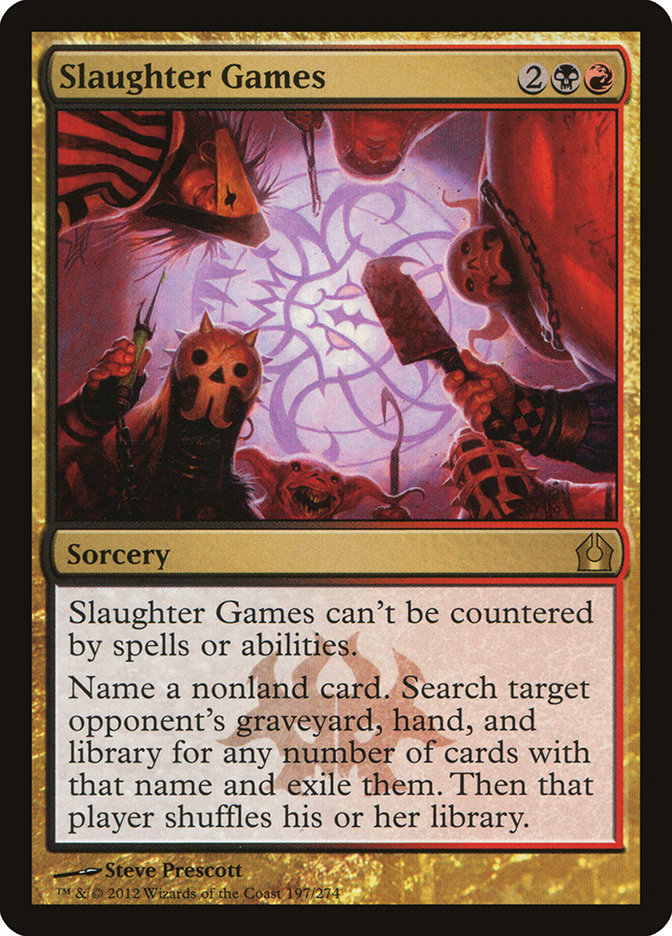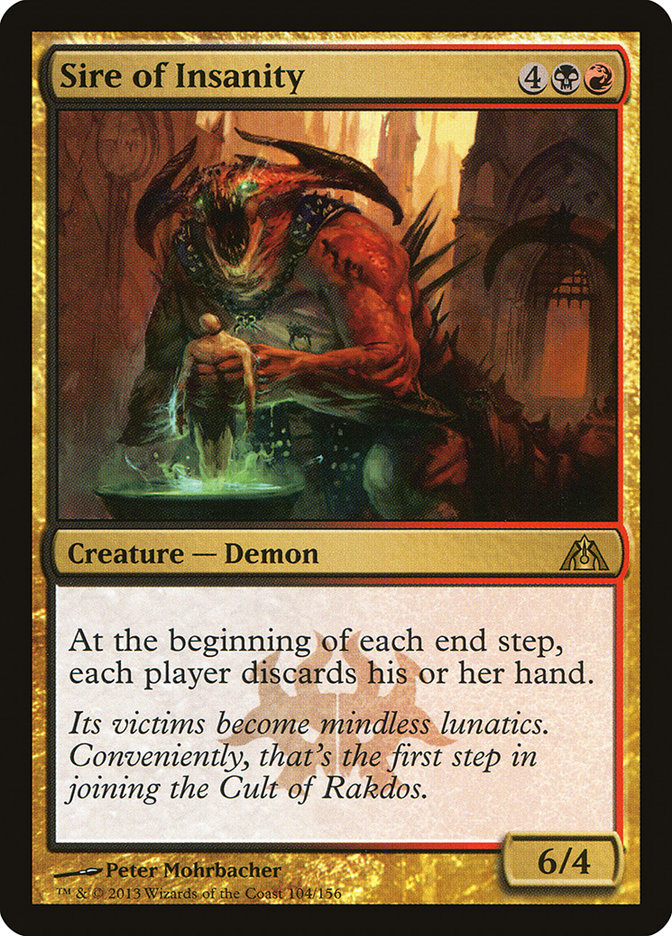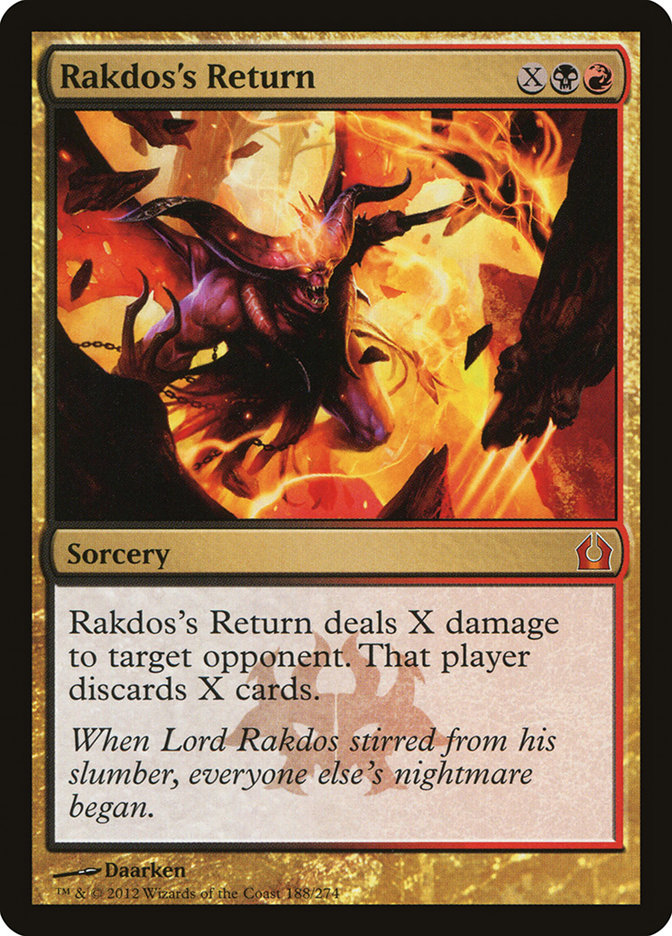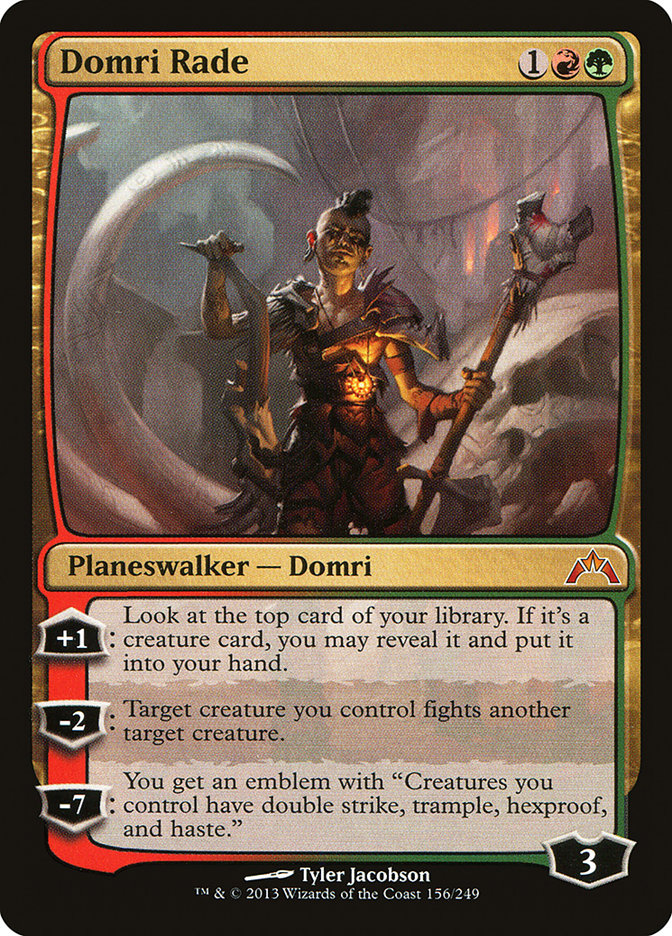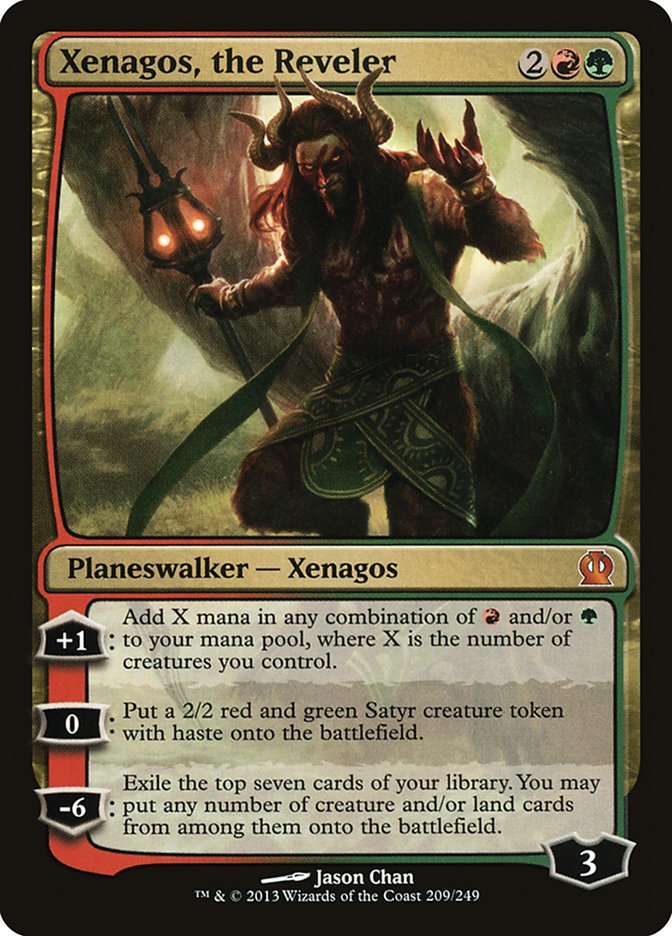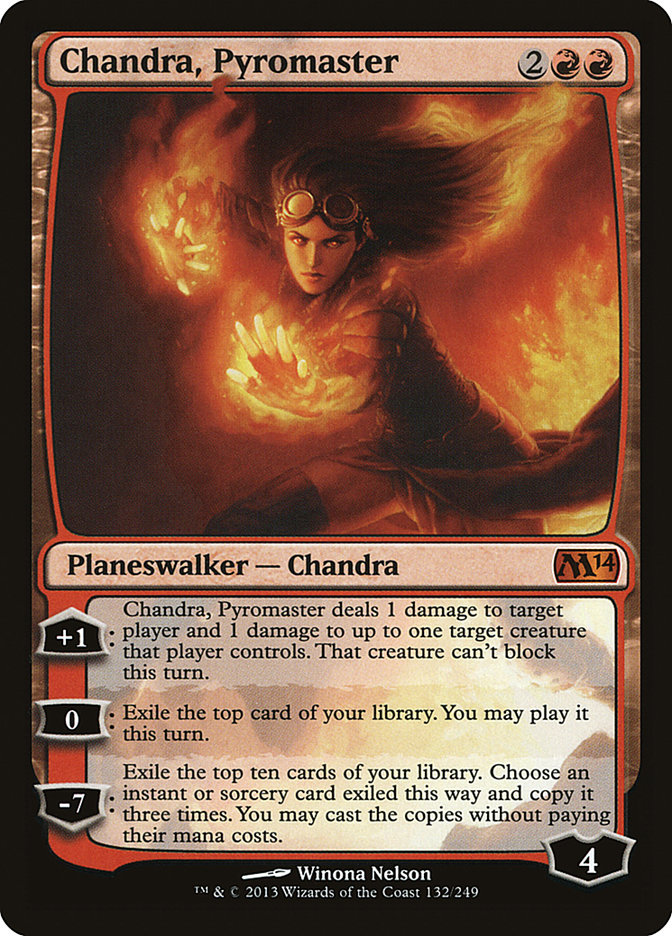This past weekend the first major Standard tournament featuring Theros was held at the StarCityGames.com Open Series in Worcester. We finally got to see Theros cards take the main stage in all their glory, and guess what?
The decks looked remarkably like the ones we saw in Return to Ravnica Block Constructed at Pro Tour Dragon’s Maze.
That isn’t to say that there weren’t new cards in the mix. That isn’t to say that Theros had little to no impact on the decks and cards people ended up playing. But the fact of the matter is that I think most people just phoned it in.
It seemed like every time I tuned into the coverage, I saw a U/W/x Control mirror or U/W/x Control playing against Mono-Red Aggro. With that said, this tournament felt like Level 1, and by that I mean we haven’t even begun to scratch the surface of what’s good and what isn’t in Standard just yet. We have a baseline for what cards and strategies are a solid starting point, but there’s so much more!
Jace Is The New Jace
For starters, let’s talk about the deck that we’re all going to love to hate over the next few months—because it seems like U/W Control only got better.
I watched over and over as blue decks cast Jace, Architect of Thought and just demoralized their opponent. The +1 ability is troublesome for many aggressive strategies and forces them to overcommit to the board. This effect makes cards like Supreme Verdict and Ratchet Bomb backbreaking.
But more often than not, Jace is just going to draw you some cards.
The effect that Jace can have on any game against any opponent is pretty staggering. While a four-mana “draw two cards” isn’t all that spectacular when facing down a board full of gigantic monsters, sometimes that’s all you need to find your Supreme Verdict.
But when Jace is good, it is oppressively so. Against a deck full of small creatures, the effect simply neuters everything you’re trying to do. This means you need to go bigger. This means you need threats that can actually deal with Jace or answers that kill it on the spot. Leaving Jace in play for more than a turn is pretty dangerous as it is, but many archetypes just don’t have the tools necessary to push through that extra damage to kill him off.
The strangest aspect about Jace in the current Standard format is that he matters a lot—but only for a short period of time. After that, more Jaces are like more Sphinx’s Revelations. You have resource overload, and all you want to do is find your win condition. For many, Aetherling is that win condition, but I wouldn’t mind having a little more gas in the tank. When the games take so long, it can be very difficult to actually win a match against a mirror when you only have one real way to win the game.
If you watched any of the mirrors, you’ll know just how grindy those matches can be. You each will see the majority of your deck, and many of your small decisions matter. This means that you can make a mistake in the first few turns of the game and get severely punished for it. But with cards like Sphinx’s Revelation around, sometimes you can claw your way back into the thick of things. They can’t kill you quickly—no matter how hard they try—so don’t give up. You’re probably just a Jace or Sphinx’s Revelation away from actually being in the game.
As far as attacking this kind of strategy . . .
If you’re in the mood to play black and red spells or even the more traditional Jund, you need ways to combat Sphinx’s Revelation decks. Card advantage is their easiest way to overpower any sort of midrange strategy, so you need ways to keep that in check or invalidate it completely. This can be done a number of ways, but the easiest are listed above.
Rakdos’s Return has gotten a lot worse since the rotation of Farseek, but it is still a great way to attack control decks. You can still ramp a bit with Sylvan Caryatid and Rakdos Keyrune (or even Xenagos!), so it is still pretty awesome, though it will be less effective in reality. Sylvan Caryatid is much worse against control decks because it gets caught in the fallout of Supreme Verdict being a thing, and you’re likely going to be playing other creatures alongside it.
Slaughter Games isn’t something we’ve seen a whole lot of lately, but I think it will pick up pretty quickly thanks to the popularity of U/W decks. It was the card I was most afraid of out of Jund for a long time when I was playing Sphinx’s Revelation. One of the easiest ways to take control of a game with U/W is to just kill or counter every spell your opponent plays and follow up with a big Sphinx’s Revelation. This means building your deck to take advantage of a plethora of one-for-one spells. When the midrange decks have the ability to negate this strategy with a single spell, it’s tough to argue against it.
The problem with Slaughter Games is that I see people board it in against decks they absolutely shouldn’t. For example, at the last tournament where I played The Aristocrats, a Grixis opponent sided in Slaughter Games and named Blood Artist because it was the card that singlehandedly killed him in the first game. Awkwardly, I had sided them all out because they weren’t exactly impressive against decks with Bonfire of the Damned, so he paid four mana and a card to look at my deck and hand.
There aren’t a whole lot of spells in Standard that I would like to name with Slaughter Games, so what’s the reason to bring it in? For one, you want it when your opponent is relying on a crutch. Sphinx’s Revelation is that crutch for control decks, so that is a very appropriate place to utilize it. Cards like Slaughter Games, Surgical Extraction, and the rest are very specific answers to very specific cards, and I continually see people use them in situations that don’t warrant them. You’re basically wasting a card for a minimal effect.
Yes, sometimes you can Wasteland your opponent and strip their Tropical Islands from their deck completely, but how often do you think that’s going to happen? Now, how often do you think Surgical Extraction is going to invalidate a Reanimate? The difference here is pretty clear; one situation calls for Surgical Extraction, while the other is more of a pipe dream.
Sire of Insanity is my favorite of the three, though they all have their merits. Jund-based strategies have access to a plethora of planeswalkers to do your bidding, which apply pressure to the control decks in a vein they don’t have many answers to. They’re much more focused on killing creatures with things like Supreme Verdict and spot removal spells, and they only have so many Detention Spheres to keep all your threats in check. If you’re able to continuously play threat after threat, they’re going to have to tap out eventually.
And when they do, Sire of Insanity is going to go animal on their entire game plan.
There aren’t a lot of ways for U/W decks to interact with Sire of Insanity. More often than not, they’re going to need a timely topdeck to get out of the situation. Even then, they’re going to need another topdeck to keep their foot on the gas pedal. It is nearly impossible for them to recover from a Sire of Insanity if you have any sort of pressure alongside it, but the easiest way to do that is to present them with threats that they can’t deal with in a normal fashion. This is where the planeswalkers come in.
These three planeswalkers are your best to tag team with Sire of Insanity to take them down. Luckily, they aren’t all that bad at tackling aggressive decks either depending on the situation. The stream of threats generated by Xenagos or potential mana boost into an overloaded Mizzium Mortars is likely too much for them to overcome. Xenagos plays well in most of the ramp-based midrange decks but is just fine as a standalone threat.
As for Domri Rade, I’m certain there’s a good shell for him to thrive in, but I’m not sure if that shell is Naya, Jund, or just plain ol’ G/R. If you opt for Jund, you get access to a ton of options that will help attack these control decks in the right ways, though Domri Rade might not be the best planeswalker for that kind of strategy. You’ll need a lot of creatures in your deck to make him respectable, and that kind of plays right into their Supreme Verdict strategy.
As for Chandra, Pyromaster, I think that her steady stream of card advantage is fantastic when fighting the control decks. She helps you hit land drops or just keep the pressure on if they’re on the back foot. While she doesn’t really present a guaranteed threat, she does act as a quasi Phyrexian Arena, similar to Domri Rade, but you don’t necessarily have to have a deck full of creatures to make her useful. The B/R Control deck Gerry Thompson wrote about last week is a prime example.
Burn Them All
He said the same thing he’d been saying for hours. Burn them all.
I don’t know about you, but Patrick Sullivan reminds me of Mad King Aerys. Obsessed with fire. Loving nothing more than to see cities burn. And after this weekend, I like to think they’d both be proud.
Creatures (29)
- 4 Chandra's Phoenix
- 4 Ash Zealot
- 1 Gore-House Chainwalker
- 4 Rakdos Cackler
- 4 Burning-Tree Emissary
- 4 Firefist Striker
- 4 Boros Reckoner
- 4 Fanatic of Mogis
Lands (21)
- 21 Mountain
Spells (10)

I don’t know who this Philip Bertorelli thinks he is, setting everyone’s dreams on fire, but that isn’t very nice. Honestly, what did he have to gain by pillaging each and every one of his opponents?
Oh, right. $2400 and a nice little trophy.
If you didn’t know it already, Mono-Red Aggro is a thing. It has been for quite some time, and I don’t think it is going anywhere anytime soon. It may have lost Hellrider, Stromkirk Noble, and . . . well, that’s basically it, isn’t it?
With so many people stumbling through three-color mana bases, playing Thoughtseize, or just being too slow to keep up, Philip put them all in their place. He even made Max Tietze a bridesmaid for the second time on the weekend on his way to victory. An impressive feat from both sides, to be sure.
But my favorite part about the deck is this little guy.
As you can plainly tell, Philip built his creature base around being able to utilize the devotion mechanic. And the most hilarious part of that is Fanatic is probably better than Forge[/author]“]Purphoros, God of the [author name="Forge"]Forge[/author]. This is mainly because Purphoros is only a creature when your opponent isn’t casting Supreme Verdict but also because his effect is much more direct. With Jace being such a big deal out of the U/W decks, having that effect come immediately is much more important than having one that is a bit more lasting.
Fanatic of Mogis feels pretty similar to Hellrider in many situations, coming down after a few beaters and dealing a lot of extra damage with a body attached. While Fanatic is a little difficult to cast sometimes with only 21 lands, it’s not something to be ignored. After a few swings and some damage from your own lands, the threat of dying on the spot becomes very real.
On the whole, there are only a scant few things I don’t like about Philip’s deck. For one, many people (including GerryT, Brad, and myself) have stated that the scry effect from Magma Jet is just not worth the extra mana you have to invest when comparing it to Shock. It has been a long time since Shock was actually playable, but now seems like that time. It isn’t great against control, but sometimes all you need is a few more point of damage to close the deal.
I would also love to get some Mutavaults in the mix, even though they don’t necessarily work well with your Boros Reckoners. That’s why I would play them over some spells instead of Mountains, and Magma Jet seems like the main card on my chopping block.
The last qualm I have is with Rakdos Cackler over Firedrinker Satyr. I have no idea how Jackal Pup with a strict upgrade is worse than Cackler, as the Firebreathing ability gives you a little more fight against the control decks. And when you’re flooding out, it can help close out those last few points of damage. In a perfect world, we could fit both into the deck, but I agree with the assessment that it is more important to go big than go small. Playing both might just make you worse in too many situations against midrange decks. But for the moment, midrange decks don’t seem to be having that big of an effect on the current format, which means this might be the perfect time to go smaller than your opponent.
With big effects like Firefist Striker keeping your opponent’s creatures from blocking, going smaller seems like a fairly strong prospect. Even Owen Turtenwald picked up Mono-Red Aggro for the event, making Top 8 despite his Foundry Street Dumpsterdivers and Goblin Shortcomings. But maybe he was on to something. Boros Reckoner is a tough card to beat in any sort of mirror, so having access to multiple ways to invalidate its ability to play defense is important. In previous Standard Ghor-Clan Rampager was the easiest way to “get around it,” though it would still usually pick off another creature on its way out. Now we don’t have mana bases that are quite as good, and I don’t think you can really afford to have lands that come into play tapped in such an aggressive shell.
With that in mind, cards like Firefist Striker and even possibly Goblin Shortcutter are options that you need to consider regardless of how mediocre they may seem on paper. For now, I’ll stick with something that more closely resembles Philip Bertorelli list, but these are the changes I would make.
Creatures (30)
- 4 Chandra's Phoenix
- 4 Ash Zealot
- 3 Rakdos Cackler
- 4 Burning-Tree Emissary
- 4 Firefist Striker
- 4 Boros Reckoner
- 3 Fanatic of Mogis
- 4 Firedrinker Satyr
Lands (22)
Spells (8)

The Shell Game
I have a nice little story from FNM this past weekend. In the first round of the tournament, I faced a very young but ambitious opponent. Now, let me just say that the last thing I want to do is make fun of younger players for being inexperienced, but this small amount of setup is necessary to create the context of exactly what happened and to also let you know that my intentions are not to offend. To make things easy, let’s just say she was beating me down with Serra Angel and loving it and leave it at that (Yeah, we’ve all been there. I remember when Kavu Monarch was the best card in my Kavu deck!).
So for the duration of our match, I decided to “shell game” my Jace with her, allowing her to see the cards and put them into two piles face down. Then I would ask her which one was the good pile, and she would look back at me silently, giving nothing away. On the first activation, I decided to take the pile featuring one card. That card just so happened to be Supreme Verdict, and it killed all of her creatures! She was displeased, but she was also learning.
The next time I used Jace, we did the same shell game. I gave her the three cards face down. This time, she thought a little longer. After she was done thinking, she chose her piles and presented them to me. I naturally went for the pile featuring one card again in hopes it would be a removal spell for her lone threat.
It was a Watery Grave.
And at that moment I realized just how smart she was. She had figured out my little game on the fly and completely obliterated me on the second try. Do you want to know what was in the two pile? A Doom Blade and another Jace.
But it really made me think about how silly the ability on Jace actually is and also how much more spectacular it would have been (on multiple levels) if only your opponent was able to see the cards. It might make for more automatic Divinations from Jace, but the times where you really need that one card to pull ahead in the game . . .
And that’s the Shell Game.
Get Cleveland Browned
Hopefully, the next couple weeks, which feature the StarCityGames.com Standard Open in Cleveland as well as Pro Tour Theros, will liven things up a bit. Until then, we can only brew and speculate about what we think is going to be the next big deck. I’m crossing my fingers that the Pro Tour brings a lot of new ideas to the table. I don’t know how many more times I can watch a Jace on Jace mirror.
Currently, I’m a fan of aggressive strategies. Being the one putting the beats on your opponent just feels good. After all, there are no wrong threats. Only wrong answers.
Todd Anderson
strong sad on Magic Online
@strong_sad on Twitter

